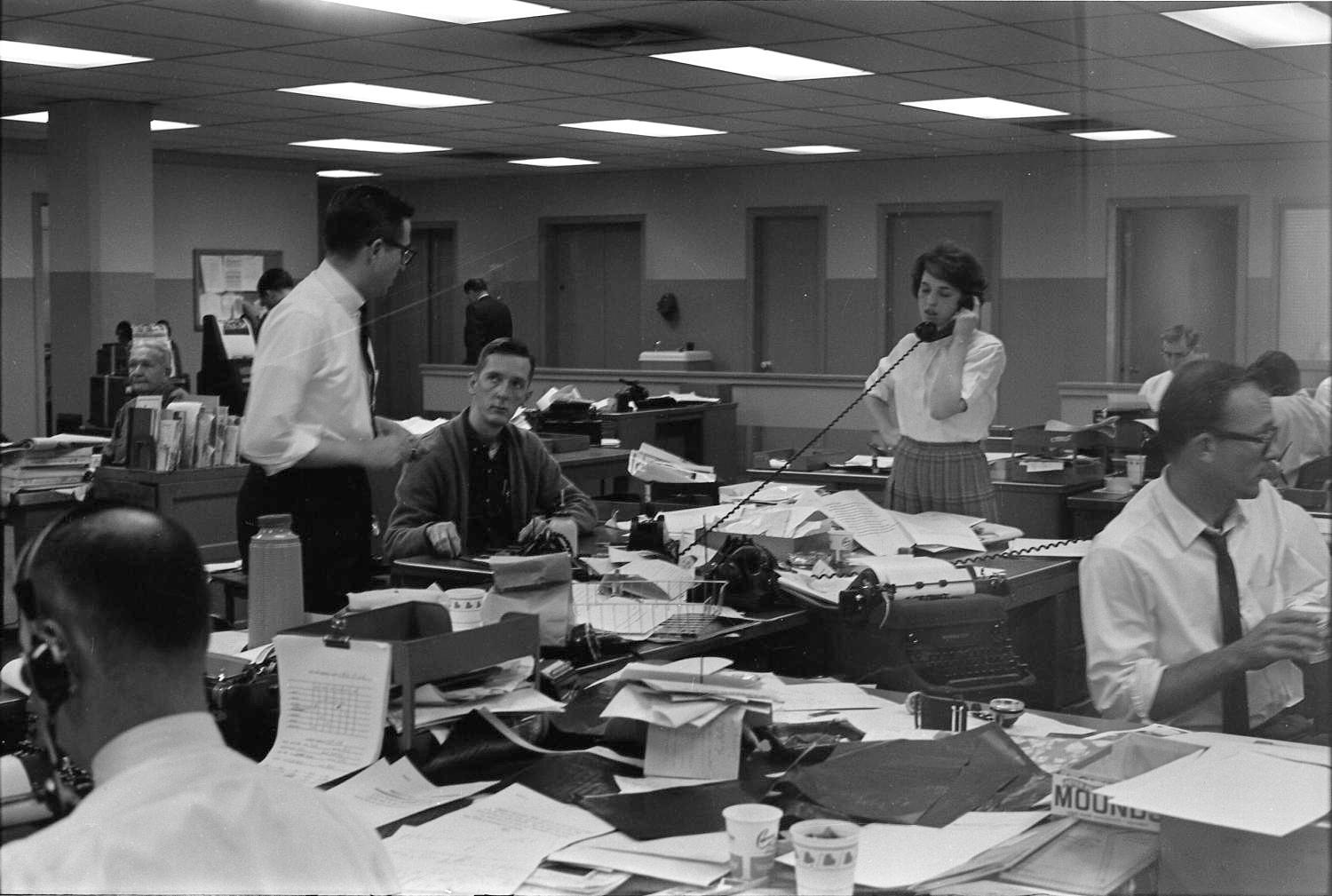
(My journalism training at the University of Kansas owed some to the classroom, but a lot to covering the campus during two academic years for the nearby Kansas City Star. Being its KU correspondent was at least a half-time job, one that paid enough to finance my last year of college. I helped the sports writers cover football and basketball games. But I was also there when students staged sit-ins and other controversies erupted. All in all, the Star was a wonderful introduction to big-city newspapers for a young man anxious to get out of school and get on with things. These are my tales of this experience.)
Luck counts for something in life. When I got to the University of Kansas in the fall of 1962, I knew I wanted to be a newspaperman. I looked for ways for my college years to jump-start that ambition. And I very quickly discovered a path that might lead me to a job on a big city newspaper right after graduation. That was to be the KU correspondent of the Kansas City Star. The evening Star (its morning edition was the Kansas City Times) was then a great regional newspaper, easily the equal of the Des Moines Register or Minneapolis Tribune or St. Louis Post-Dispatch. And it had a tradition of treating its correspondents at Kansas, Kansas State, and Missouri universities like junior staff members. Whereas its other stringers were paid 10 cents per column inch, the campus correspondents earned $1 for each inch published. The earnings could easily pay for a state university education.
I noticed that doors of employment opened up for KU correspondents to the Star. Fred Zimmerman was the Star’s man at KU my freshman year. Fred, the son of a Baptist minister in suburban Kansas City, was quite the Big Man on Campus. His editorials and news articles at the University Daily Kansan so infuriated the university’s chancellor, Dr. W. Clarke Wescoe, that when I encountered Dr. Wescoe decades later and dropped Fred Zimmerman’s name, the poor man became red-faced and apoplectic. Fred went right from KU to the Wall Street Journal and ultimately was editor and publisher of the Asia Wall Street Journal, where he regularly angered the government of Singapore. Oh yes, in 1962, in his junior year, Fred took first place in the Hearst Journalism Awards Program.
Okay, maybe I’d never be a BMOC or give Chancellor Wescoe angina. But I did want to follow in Fred Zimmerman’s footsteps with the Star. Here’s where my good luck came into play. Zimmerman’s replacement as KU stringer was Roy Miller, who held the position before he, too, graduated at the end of my sophomore year. Roy and I got along well, and he knew of my ambition to be his successor at the Star. The following spring, as Roy prepared for graduation, he recommended to the state editor, Frank Whitsitt, that I replace him, starting in late March of 1964. I drove to Kansas City to meet the Whitsitt and stare in wonderment at that institution’s huge newsroom.
My first stories followed immediately. On March 22 and again March 27, I wrote about picketing of Sigma Nu fraternity, whose national organization forbade its chapters from pledging black members. On April 1, I covered a speech delivered by Senator Wayne Morse of Oregon, predicting (correctly) that America’s growing involvement in Vietnam’s civil war would end in failure. On May 18 came a milestone: my first front page story, about the 36,000-mile world tour of the 18-member KU Brass Choir. By the looks of the pile of clippings I saved, I earned hundreds of dollars that spring. But if I’m to believe those yellowing clips, I left Lawrence, Kan., in late May to again work on my dad’s newspaper in Texas for the summer without getting a single byline in the Star. That would change come fall.
